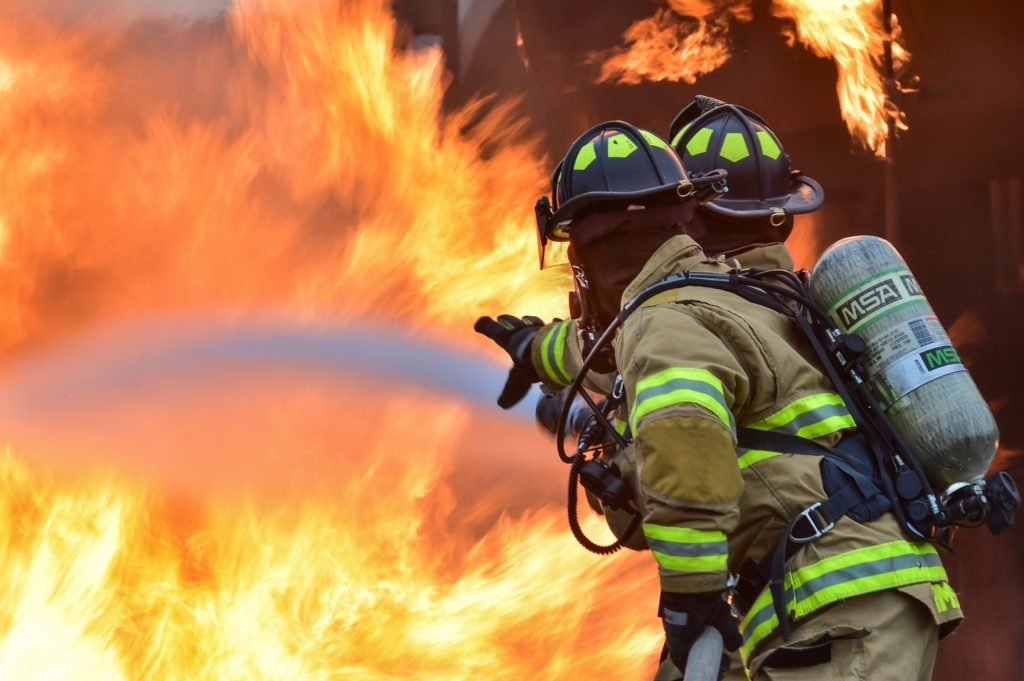Jeff Dietterich, President & CEO of Advanced Equipment Sales (AES) discusses Fire and Dust and the importance of mitigating risk with NAID News.
by Jeff Dietterich
As published in NAID News December 2010
The act of shredding paper produces dust – lots of dust. It’s the nature of the business. Anyone who’s ever seen a mobile truck dump its load is familiar with the ghostly white cloud that rises from the pile. Conversely, plant-based shredding introduces a steady stream of fine particulate into the air. So what’s the problem with a little dust? Over time, dust build-up will clog equipment and shorten its service life, and airborne particles can irritate lungs and eyes, presenting a health risk for employees. But there’s another often-overlooked hazard that you can’t afford to ignore. Dust is highly explosive, and how you deal with it has never been more important now that the Occupational Health and Safety Agency (OSHA) has established a special program to identify dust-related hazards in the workplace.
OSHA initiated it’s National Emphasis Program (NEP) for Combustible Dusts in November 2007 in response to a massive dust explosion the killed 14 workers at Imperial Sugar’s Port Wentworth, GA facility earlier that year. Since that time the NEP for Combustible Dust has targeted a broad range of industries, issuing nearly 5,000 violations in the past 3 years. Hundreds of compliance officers across the country have been provided with specific training to identify combustible dust hazards in the workplace. While OSHA does not specifically target the secure destruction industry, its inspectors have cited secure destruction facilities for dust violations as a direct result of this emphasis program. Some facilities were also cited for additional violations involving personal protective equipment, electrical equipment for hazardous (classified) locations, first aid, powered industrial trucks, and fire extinguisher standards. Another common violation is the use of compressed air in excess of 30 psi for cleaning purposes. Not only does this practice violate the standard, but it could potentially cause deflagration or explosion of the resulting dust cloud if ignition sources are present.
Although OSHA, at present, does not have a specific standard on combustible dust hazards, the agency has several existing standards that apply to facilities that handle combustible dust. In addition, there are other Federal and State standards that OSHA refers to in its inspection and enforcement activities.
How does this affect your secure destruction business? Putting it into perspective, the typical secure destruction operation does not generate enough dust to create the kind of massive explosion and fire that prompted this OSHA emphasis program. However, the paper dust generated in a paper shredding operation is flammable, and under the right conditions, explosive. The mere presence of a 1/32” layer of dust on a horizontal surface can be cause for citation. If there is an existing dust collection system in operation it must be equipped or retrofit with certain safety features that mitigate the opportunity for a dust fire or explosion.
Diligent housekeeping is the number one way to keep dust under control. Equipment can be enclosed and equipped with covers that may reduce the amount of dust that becomes airborne in a facility. If that is not enough, additional measures such as equipping you operation with an integrated dust control system may be necessary. If this is the case, engage the services of a qualified, experienced professional that is thoroughly familiar with your process and all of the pertinent fire safety standards. You should also contact the local Fire Marshal or Building Code Enforcement Officer to review your dust collection system design and installation plan BEFORE you purchase or install any equipment.
Making dust control an integral part of your company’s heath & safety program is just good business. A cleaner, healthier work environment encourages greater productivity, reduces accidents, mitigates the risk of fire and reduces the risk of OSHA fines and penalties.
Jeff Dietterich is President of Advanced Equipment Sales, a NAID Associate Member, and chairs he NAID Health and Safety Committee.
For more information on controlling dust in your building, learn more about the different types of Spark Detection and Fire Suppression Systems.

